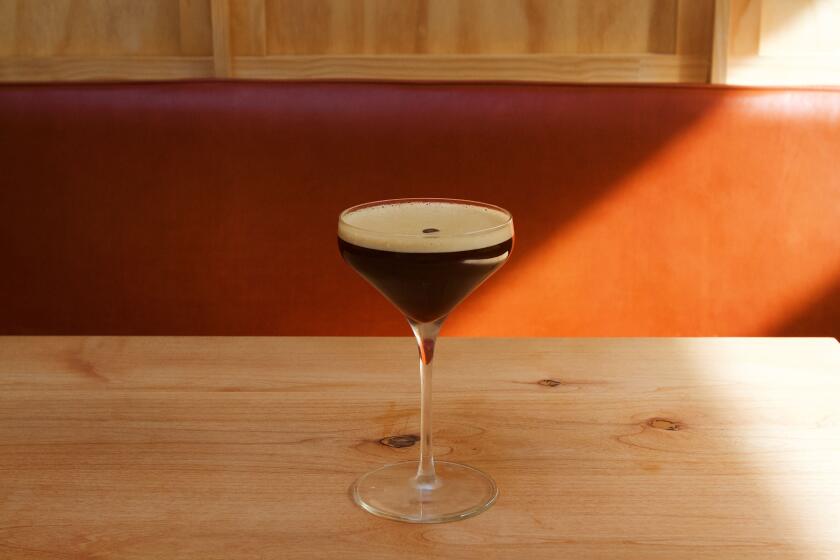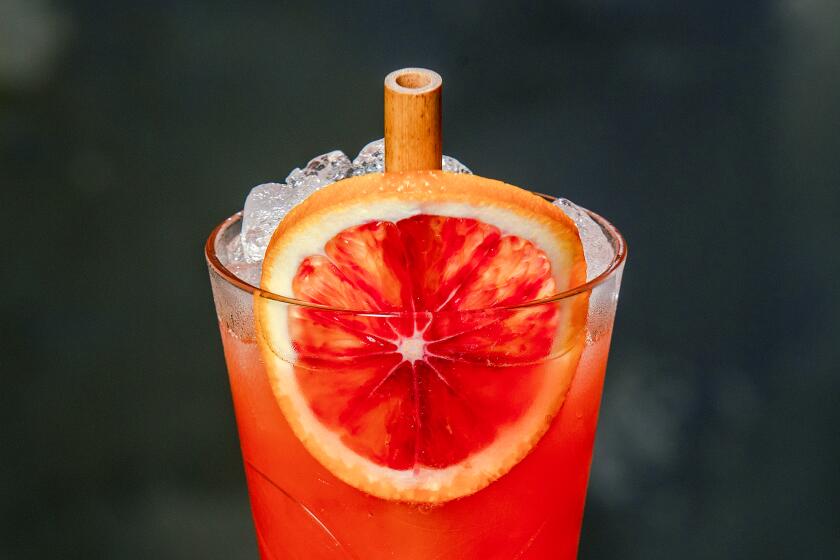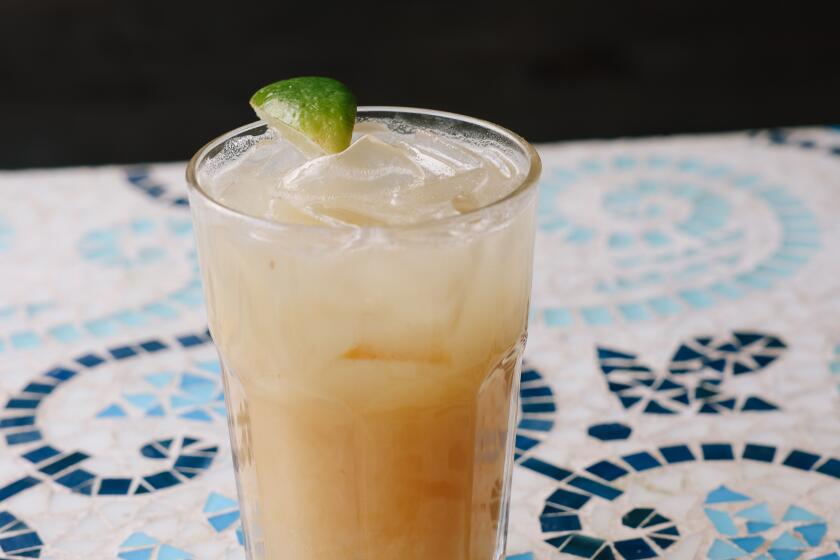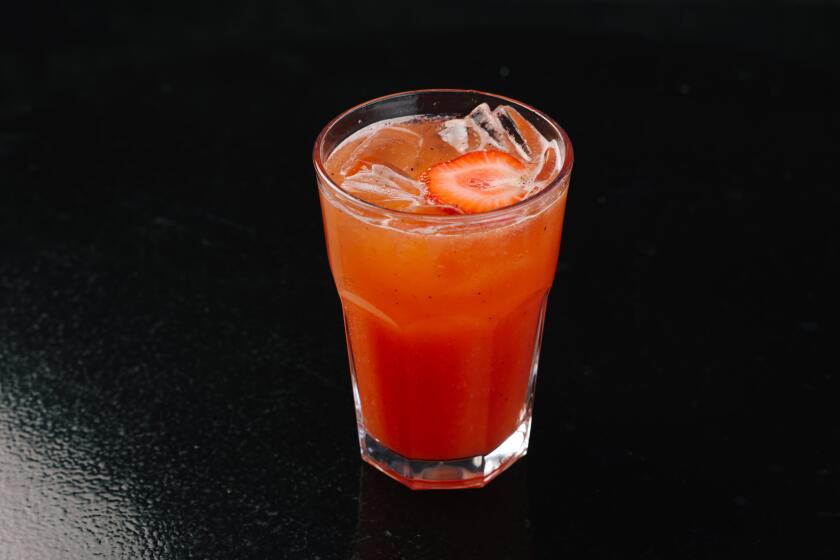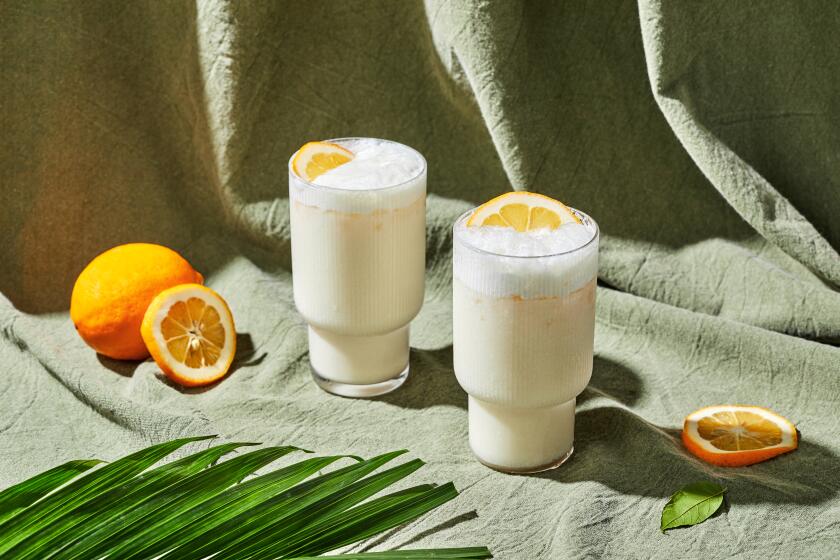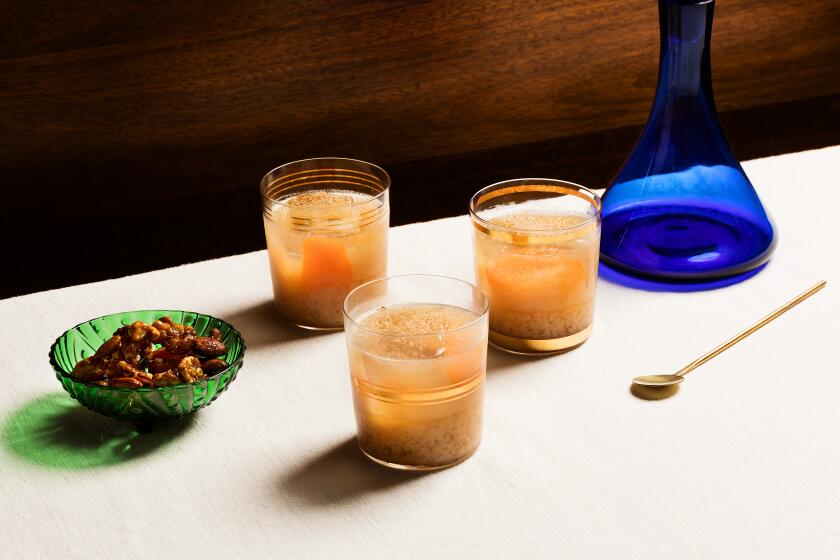Prince of Wales' cocktail

THE cocktail is âessentially an American contraption,â writes David Wondrich in âImbibe!,â his new history/celebration of 19th century mixology: âHow could it be anything but? Itâs quick, direct and vigorous. Itâs flashy and a little bit vulgar. It induces an unreflective overconfidence. Itâs democratic, forcing the finest liquors to rub elbows with ingredients of far more humble stamp. Itâs profligate with natural resources (think of all the electricity generated to make ice that gets used for 10 seconds and discarded).
âIn short, it rocks.â
The hero of Wondrichâs book is âProfessorâ Jerry Thomas, author of âHow to Mix Drinks, or the Bon Vivantâs Guideâ (1862), the first published bartenderâs manual. Thomas invented a number of cocktails, including the Tom and Jerry, which he named after himself (or perhaps, as he sometimes claimed, after his two pet rats). In his day, he was most famous for the Blue Blazer, which was mixed by tossing burning whiskey from one glass to another, preferably with the lights turned low. He published the first recipe for a gin fizz and the first cocktail recipe calling for a twist of lemon instead of the grated nutmeg of earlier times.
As Wondrich points out, the cocktail was the first American cultural product to impress the world. In the 1830s, having previously made little besides English-style punch, hot toddies and some rustic concoctions of rum or applejack, American bartenders suddenly showed a huge burst of creativity when ice became widely available. Wondrich calls the period from 1830 to 1885 the baroque era of the cocktail, when elaborate fruit garnishes and flamboyant showmanship were all.
--
A dandy and gambler
Thomas was a larger-than-life character. At various periods of his life a sailor, Gold Rush miner, Broadway dandy, art collector and gambler as well as a celebrity mixologist, Thomas plied his trade in New York, New Orleans, Chicago and up and down California and the Mississippi River -- anywhere there was a big thirst. He was the leading bartender of the Civil War type, which, as a newspaper later recalled, âwith his pomade-plastered hair, his alleged diamonds, his loud oaths and his general aspect of bravado, was a sort of a cross between a dandy and a highwayman.â The difference was that Thomas always sported real diamond rings and stickpins.
âHow to Mix Drinksâ has been reprinted many times, and you can even read the text online at www.theartofdrink.com/book. Wondrich concentrates on Thomasâ recipes but features other prominent bartenders of the era as well. In some cases, he says, itâs because he prefers their versions of a cocktail to Thomasâ.
In others, heâs obviously just fascinated by the way odd-sounding old recipes can turn out to be delicious. He describes William Schmidtâs Weeperâs Joy (absinthe, vermouth, kummel, sugar syrup and curacao) as âa drink that looks like a train wreck on the page but tastes like an angelâs tears.â
But thereâs another reason for including these other mixologists. âImbibe!â aims to re-create the whole world of 19th century cocktails, from the punch-bowl era down to the post-1885 craving for classicism, which meant smaller drinks without the complicated garnishes and show-offy presentation of mid-century, accompanied by a new taste for elegant dryness (dry gin, dry rum, dry Champagne).
Wondrich is keenly interested in re-creating the exact flavor of American cocktails at the time when they were conquering the world.
So he urges the reader to use Demarara sugar for syrup because perfectly white sugar was rare back them. Eggs should be small (there were no jumbo eggs) and ice should be shaved or hand-cracked. Wondrich suggestsGrand Marnier as an alternative tocuracao and Dutch gin rather than dry London gin, and he proposes pink Zinfandel as a substitute for Catawba, a practically extinct East Coast wine.
This is admirable -- details make all the difference. Perhaps this book will persuade people to go out and make their own authentic maraschino cherries by soaking sour cherries in Maraschino liqueur.
--
Clearing up mysteries
Thereâs an appendix of recipes for various 19th century bitters, some of which turn out not to be exactly replicable because they call for snakeroot, which is, you know, poisonous. Before that comes a selection of 16 newly created drinks by present-day bartenders. Theyâre a mixed bag and seem kind of tacked on, though maybe Wondrich is giving us a lesson here -- if the Weeperâs Joy is really wonderful, maybe a cocktail that calls for horseradish-infused vodka or an El Bulli-type foam of Campari and rosehip jam is wonderful too.
Those modern recipes aside, this book is a model of food history writing. Wondrich is knowledgeable, and heâs intent on clearing up various mysteries about the history of the cocktail. Sometimes, with his detailed notes about forgotten techniques and mysterious ingredients, he skirts close to the obsessive, but heâs always an enjoyable writer, curious, eager, mildly opinionated and with a taste for the amusing.
Put the sugar in a mixing glass with the bitters and one-half teaspoon water. Stir briefly until it has dissolved. Add the rye, the maraschino and pineapple chunk. Fill two-thirds full of cracked ice and shake vigorously to crush the pineapple. Strain into a chilled martini glass; add the cold Champagne. Garnish with a twist of lemon zest. Serve immediately.
Get our Cooking newsletter.
Your roundup of inspiring recipes and kitchen tricks.
You may occasionally receive promotional content from the Los Angeles Times.










